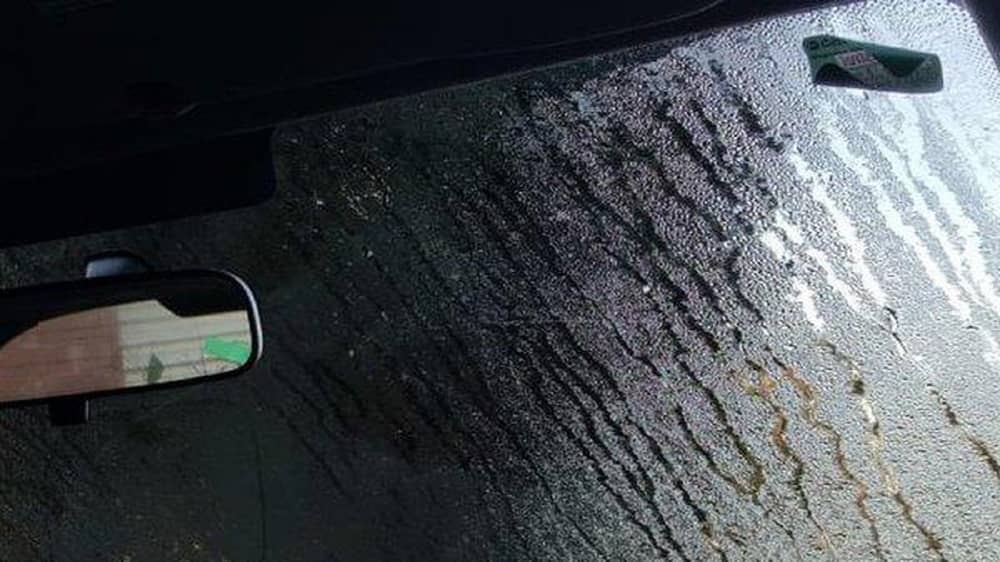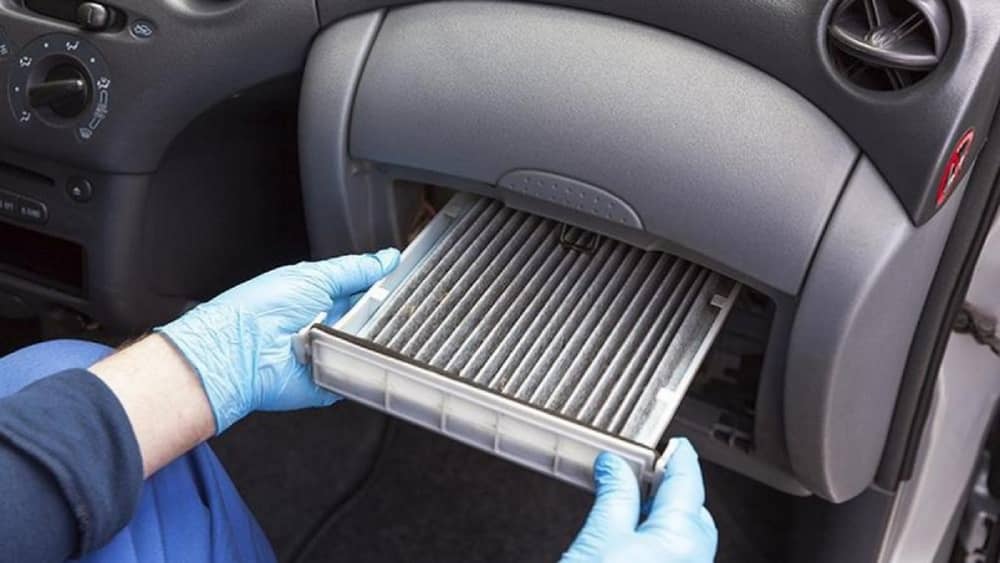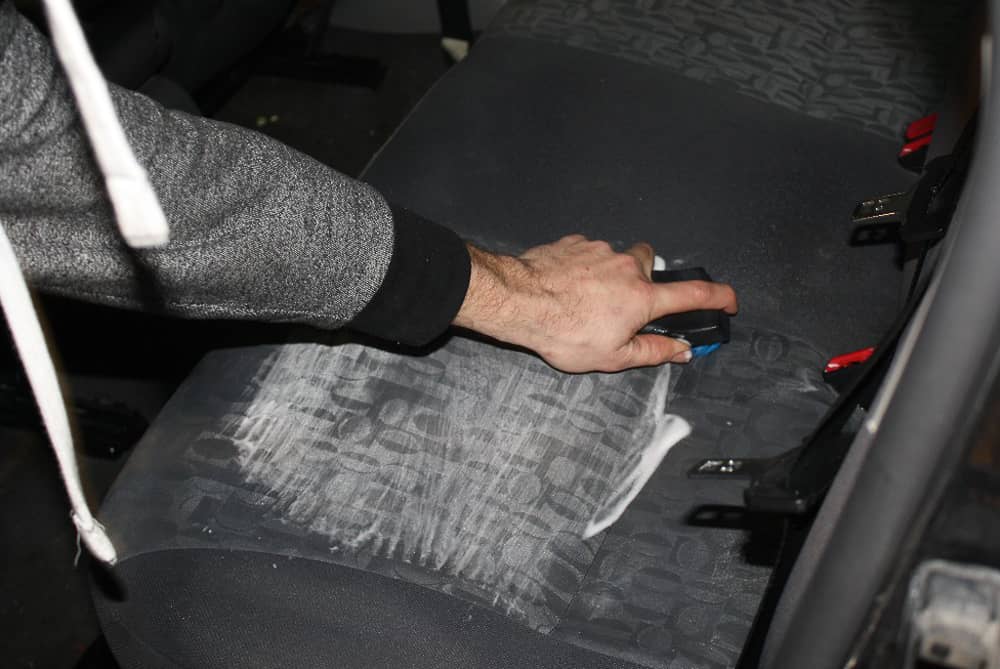Water on floor of car back seat when raining? The leaking sunroof and deteriorating windshield gaskets are the main causes of the water on the backseat floor of the automobile. The causes of this moisture include leaky doors, leaking air conditioners, and a broken heater core.
Mold will develop if the inner surface of the car is left moist. Although it is simple to remove mold from an automobile, you don’t want it to grow.
Most frequently, a clogged drain tube or an AC problem will cause the leak. By locating the leak’s source and clearing the clogged regions, you can repair them.
To learn the specifics on how to achieve that, keep reading this page. We’ll also go through how to dry the floorboard of your car and how to stop it from happening again. Let’s start now!
Reasons For Water On Floor Of Car Back Seat When Raining?

There are actually a number of things that could be the cause of your car floor being wet if you don’t know why. Following is a list:
Windshield Gasket Failure
The passage of rainfall via the tiny gaps in your car, such as the windows and windshields, is another probable cause of water in the back seat floorboard. Manufacturers in the past used to cover the gap between the car’s frame and glass with a rubber gasket.
Butyl tape has been used in its place since rubber can degrade quickly. If your car has rubber seals, water may sneak inside since the rubber seal may eventually dry out. They could deteriorate, sustain damage, or develop leaks. If the weather stripping is poor, rainwater will enter your car.
If you reside in a cold climate, freezing water on your windshield may potentially cause harm. Rain can get inside the seal and harm the seal because water expands when it freezes.
Unclog Door Drains
Car doors also have drain holes since they were specifically designed for them, not simply the sunroof. Without door drain holes, water would get inside your car every time it rained or you drove past a sizable puddle.
The door’s drain holes enable the water to instead run down onto the road and away from the automobile. These drains at the base of the door, like the sunroof drain, may eventually become clogged with dirt and debris.
Any additional water that seeps into the door gap will not be able to adequately drain out if the drains get clogged.
Defective Sunroof
A leaking sunroof is one of the most frequent reasons of a damp car floor. Regular sunroof opening increases the chance that you’ll unintentionally clog the drain holes in your automobile.
When it rains and the sunroof is open, water will be directed away by specially positioned drains. The sunroof tray’s drain holes may clog up with outside debris, such as leaves, dust, and dirt, if the sunroof is frequently left open.
If the drain holes are blocked, water will not be able to exit through them and onto the road even when the sunroof is closed. When the drains are blocked, the only place the water can travel is into the car’s cabin.
Heater Core Leaks
Your automobile may be leaking coolant if you notice that the wet floorboards have a pink, yellow, or greenish color. In actuality, coolant is used to heat rather than just cool your car.
Through a heater core, hot coolant is transferred from the cooling system. The desired heat was then blown into the car after that.
If the coolant is not changed frequently, the heater core, which is already brittle, may prematurely wear out over time as it begins to degrade.
Being essentially a radiator, the heater core is susceptible to leaks much like any other radiator system. If the heater core is damaged, coolant will seep out of it and leave damp areas on the underneath of your automobile.
Because coolant is not clear like water, it is simple to detect leaks. The fluid that is leaking will have a pink, yellow, or green tint and a sweet scent.
A coolant leak should be repaired as soon as possible because breathing in the fluid for an extended length of time might have major health consequences.
Dripping Doors
The car doors aren’t completely airtight. The car may get wet inside. Water drips through the perforations at the bottom of the car door from the protective sheet covering the door. These membranes won’t function if they are harmed or old.
Any water that has accumulated within the automobile will be emptied, but the drain holes themselves may become blocked. The water will be forced into the cabin as a result. Let’s inspect the door’s underside to discover if the drain holes are blocked.
Blockage in the AC Evaporator Drain

Your car’s floor could be damp due to the A/C system, even though it may not seem like the most obvious cause. Cool air is sent into the vehicle to lower the temperature and remove any warm air, which is how the A/C operates.
On a hot day, this is a good technique to keep drivers and their passengers cool. However, if the evaporator drain clogs, it could cause problems.
Water vapor from the warm air that the air conditioner draws back in is drained away by the evaporator drain in the system. Drivers frequently have no idea that there is moisture present on the road since the vapor is poured out onto it.
A buildup of water on the floor will result from the water vapor not having anywhere to go if the A/C evaporator drain becomes blocked.
Water On Floor Of Car Back Seat When Raining? – How To Fix

The floor of your automobile could be damp for a number of reasons, as you can see. It’s critical to take action as soon as you identify the leak or obstruction’s location and rectify it. Your car will sustain more damage that will cost more money to repair the more water you let leak in. A list of solutions to the issue of producing a damp car floor is provided below.
Fix Sunroof Leakage
There are several ways to fix a leaky sunroof if you notice water on the floor of your car’s back seat when it rains. Understanding why the leak is occurring must be done first. You can clean it and fix the issue if the water gets into your cabin area as a result of the accumulation of dirt.
To reach the drains, first open the sunroof. As debris can prevent the sunroof from properly shutting, clean the seal. Use an air compressor in the direction of the drain holes to force the obstruction out the opposite side.
If you don’t have an air compressor, you can use a water hose. Even if the sunroof’s rubber seal is clean and the drain holes are the source of the leak, it is a good idea to clean it. By doing this, you can lengthen its lifespan and stop other problems from developing later.
Fix Clogged AC Drain
You might need to employ different strategies depending on the cause of the water on the floor of the back seat of the car. Let’s begin by discussing how to handle the drain tube since it is the most typical. To clear a clog in your AC drain, follow these steps.
The HVAC system should be turned off as you park your automobile on a level surface. You can use a piece of straightened wire as a hook by bending the end at a slight angle. The AC drain line should then be found. It’s most likely to be outside your car, close to the condenser, so use jack stands if necessary.
To remove any dirt or debris you find inside the drain line, slide the piece of wire into the line and use it to pull it out. To clean up any leftover dirt inside it, use compressed air.
It should clear up after doing these things and resume operating normally. If the AC rubber seals become damaged, it shouldn’t be too expensive or difficult to replace them. But, if the evaporator core has failed, your only choice is to purchase and install a new one.
Final Thoughts
Water on floor of car back seat when raining? Now that you are aware of the major causes, you may take steps to avoid it from happening again. We hope this information will assist you in determining the source of the leak in your particular situation and in fixing it. Avoid letting the water linger in your car for too long as this can encourage the formation of mold and mildew.
